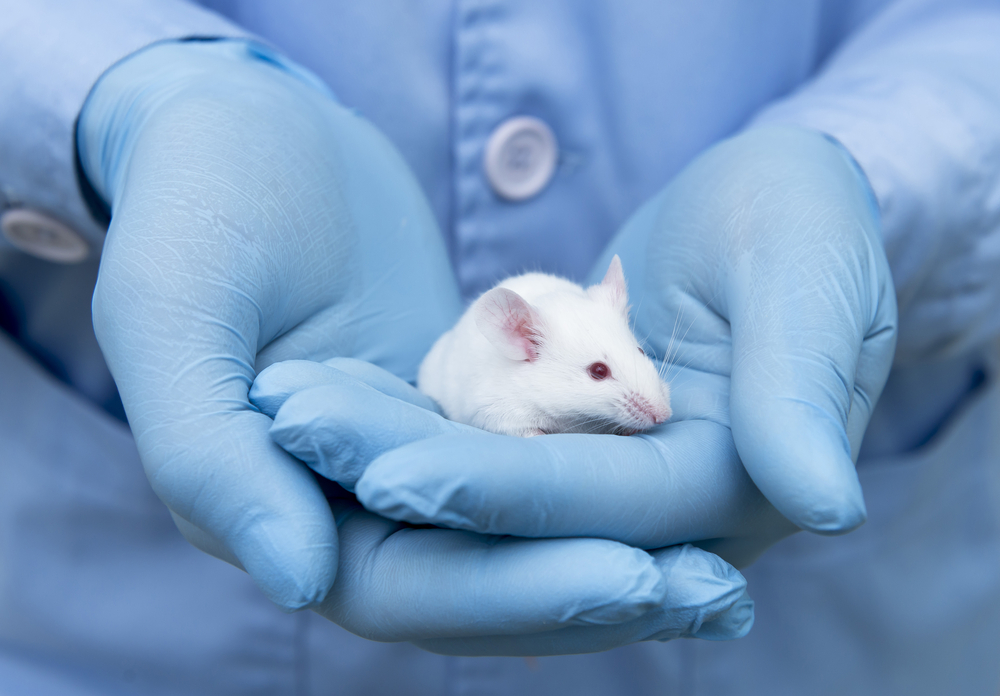Early Brain Activity Patterns Can Predict Cognitive Deficits in Mouse Model of Alzheimer’s, Study Shows
Written by |

Certain patterns of brain activity can predict early on the probability of cognitive decline in young mice at high genetic risk of developing Alzheimer’s disease, a study has found.
The findings, “Early Hippocampal Sharp-Wave Ripple Deficits Predict Later Learning and Memory Impairments in an Alzheimer’s Disease Mouse Model,” were published in the journal Cell Reports.
Although genetic and environmental risk factors for Alzheimer’s are known, scientists are still searching for ways to predict those who will develop the disease, when symptoms will arise, and how rapidly they will progress.
“There is therefore a pressing need to identify early pathophysiological alterations that can distinguish later cognitive decline from healthy aging,” the researchers wrote.
In a previous study, researchers studied patterns of brain activity, known as sharp-wave ripples (SWRs), to identify minor alterations that could be associated with future memory impairments in mice.
SWRs originate in the hippocampus, a brain region involved in spatial learning and short-term memory, and can be thought of as an “instant replay” of a recent memory (e.g. a person moving through a house, or a mouse moving in a maze previously visited).
The team used genetically engineered mice carrying the human apolipoprotein E4 (ApoE4) gene, a well-known risk factor for Alzheimer’s. As they age, these mice often develop memory problems. As a control for their experiments, the researchers used mice carrying the more common apolipoprotein E3 variant (ApoE3), which does not increase the risk of Alzheimer’s.
Findings revealed that mice carrying the ApoE4 gene had lower SWR abundance and weaker short-gamma (SG) power than healthy mice, suggesting that these particular patterns of brain activity could be used to predict the severity of memory impairments in aging ApoE4 mice.
Of note, SWR abundance measures the speed at which an animal can learn and memorize new information, while SG power measures the accuracy of new memories and is involved in memory retrieval.
To further explore these findings, the group then designed a study in which they recorded SWR activity in 12- to 18-month-old (equivalent to 42–56 human years) ApoE3 and ApoE4 female mice at rest. Then, a month later, they performed spatial tests to assess the animals’ memory.
They found that ApoE4 mice had fewer SWRs and lower SG power, and were also more likely to have spatial memory deficits.
“We actually successfully replicated this experiment two years later with different mice,” Yadong Huang, MD, PhD, senior investigator at Gladstone Institutes and senior author of the study, said in a press release.
In their second set of experiments, the investigators periodically recorded SWR activity throughout the animals’ life, starting when they were 5 to 8 months old (equivalent to young human adults, long before memory deficits appear), followed by 9–11 months (equivalent to approximately 35–38 years of age in humans) and 13–17 months (equivalent to roughly 45–55 in human years).
Results showed that deficits in SWR abundance and SG power at an early age predicted which mice were more likely to have worse performances on memory tests 10 months later — the equivalent of 30 human years.
The group is now switching gears and collaborating with colleagues at the UCSF Memory and Aging Center in a new project to investigate if the same changes in SWR activity could be present in patients with Alzheimer’s.
“A major advantage of this approach is that researchers have recently developed a noninvasive technique for measuring SWRs in people, without implanting electrodes in the brain,” Huang said.
If similar SWR alterations are found in humans, an early prediction of Alzheimer’s may be possible. In addition, the possible therapeutic effects of new medicines could be tested early on in the course of the disease and followed over longer periods of time, increasing the chances of new discoveries.
“I feel strongly that Alzheimer’s research should not just focus on pathology [disease mechanisms] but use functional alterations like SWR deficits to guide research and drug development. Our new findings support this kind of approach,” Huang added.





